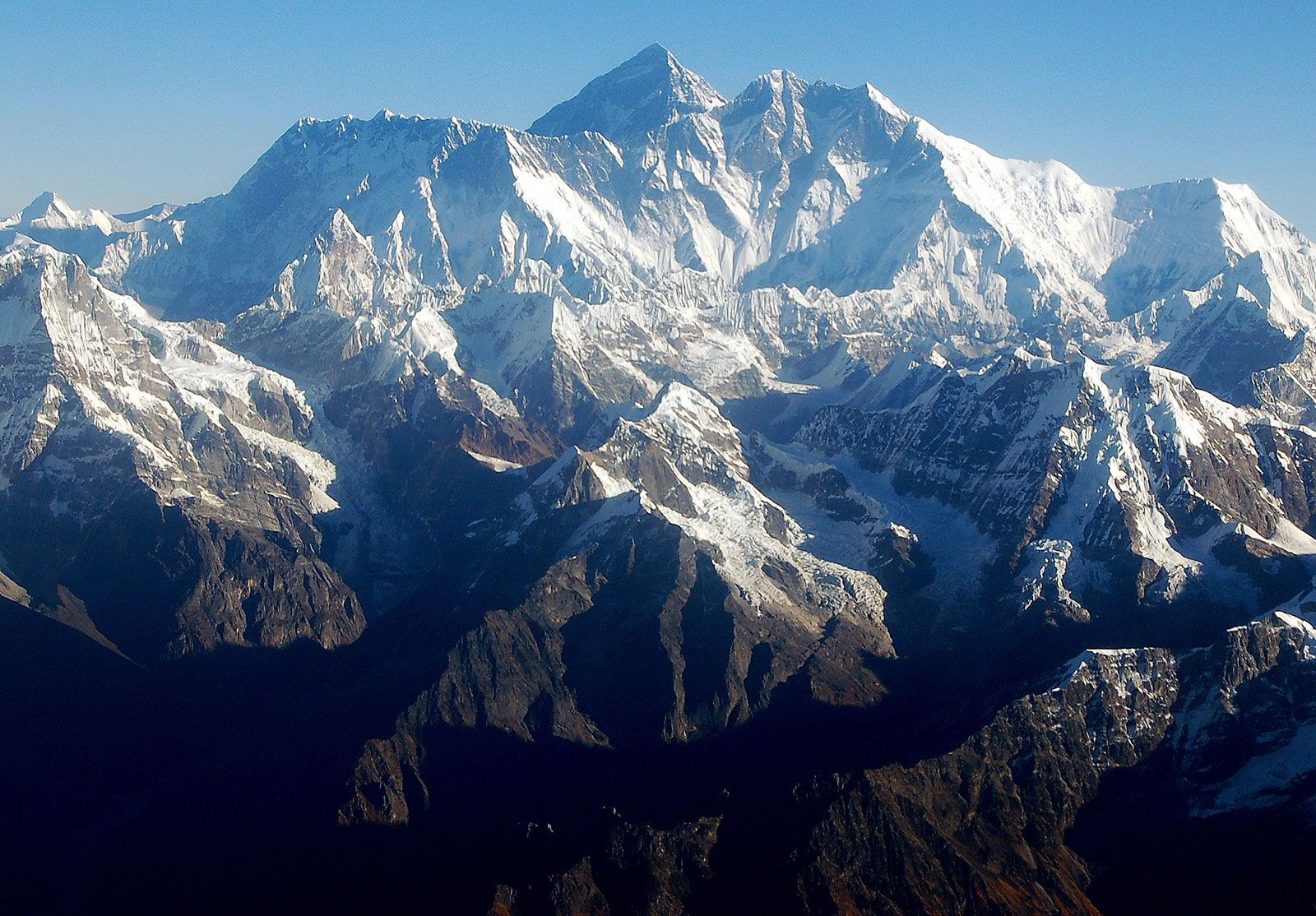Mount Everest, the world’s highest peak above sea level, is majestically situated in the Himalayas. Specifically, it lies in the Great Himalayas range, on the border between Nepal and Tibet (China). This colossal mountain is not just geographically significant; it’s a focal point of geological wonder and climatic extremes. Understanding its precise location within this vast mountain system is key to appreciating its unique features and the challenges it presents.
Geographical Context within the Himalayas
The Himalayas themselves are a product of immense tectonic forces, forged by the collision of the Indian-Australian and Eurasian Plates millions of years ago. This ongoing collision, which began approximately 40 to 50 million years ago, pushed the Himalayan ranges skyward. Mount Everest and its neighboring peaks are part of a mountain massif, a concentrated knot of this tectonic activity within the Great Himalayas. Remarkably, even today, Mount Everest continues to inch northeastward and upward, a testament to the Earth’s dynamic nature.
 Mount Everest massif in the Himalayas, Nepal
Mount Everest massif in the Himalayas, Nepal
Physical Features of Mount Everest
Geological Composition
Mount Everest’s structure is a fascinating study in geology. It’s composed of multiple layers of rock, known as nappes, folded over each other due to the immense pressure of tectonic activity. The lower slopes of the mountain are built from metamorphic schists and gneisses, overlaid with igneous granites. As you ascend, you encounter sedimentary rocks of marine origin, remnants of the ancient Tethys Sea. This sea existed before the Indian and Eurasian plates collided. A prominent feature is the Yellow Band, a distinct layer of limestone easily visible just below the summit pyramid, marking this marine history.
Summit and Ridges
The summit of Everest is the meeting point of the barren Southeast, Northeast, and West ridges. Close by is the South Summit, a smaller peak on the Southeast Ridge. The northeastern face of Everest provides a dramatic view, rising around 12,000 feet (3,600 meters) above the Plateau of Tibet. Looking towards the other cardinal directions from Everest, you’ll find a ring of impressive peaks. To the north rises Changtse, while Khumbutse, Nuptse, and Lhotse encircle Everest’s base to the west and south, creating a formidable mountainous landscape.
Elevation and Prominence
Mount Everest’s summit reaches an elevation of 29,032 feet (8,849 meters), officially recognized as the highest point on Earth above sea level. The South Summit stands at a height of 28,700 feet (8,748 meters). Its sheer prominence is especially evident from the Tibetan side, towering above the vast plateau.
 Mount Everest Khumbu Icefall in Nepal Himalayas
Mount Everest Khumbu Icefall in Nepal Himalayas
Everest has a distinct three-sided pyramid shape, defined by its faces and ridges. The North Face overlooks Tibet, bordered by the North and West Ridges. Notable features here include the Great and Hornbein couloirs, and the North Col. The Southwest Face, facing Nepal, is framed by the West and Southeast Ridges, featuring the South Col and the notoriously challenging Khumbu Icefall. The East Face, also known as the Kangshung Face, rises above Tibet, delineated by the Southeast and Northeast Ridges. The summit itself is capped with rock-hard snow and a fluctuating layer of softer snow, varying with the seasons.
Drainage and Climate
Glaciers and Drainage
Glaciers are integral to the landscape of Mount Everest, extending from its peak down to its base. Key glaciers include the Kangshung Glacier to the east, the East, Central, and West Rongbuk glaciers to the north and northwest, the Pumori Glacier to the northwest, and the famous Khumbu Glacier to the west and south. The Khumbu Glacier is fed by the Western Cwm, a valley of ice nestled between Everest and the Lhotse-Nuptse Ridge. Glacial erosion is a dominant force shaping Everest and the surrounding Himalayan peaks.
The drainage system around Everest radiates outwards. Meltwater from the Khumbu Glacier flows into the Lobujya River in Nepal, becoming the Imja River, and eventually joining the Dudh Kosi River. In Tibet, the Rong River originates from the Rongbuk and Pumori glaciers, and the Kama River from the Kangshung Glacier. Both feed into the Arun River, which carves through the Himalayas into Nepal. These river valleys – Rong, Dudh Kosi, and Kama – serve as the primary access routes to the Everest summit from the north, south, and east respectively.
 Khumbu Glacier pond near Mount Everest in Nepal
Khumbu Glacier pond near Mount Everest in Nepal
Harsh Climate Conditions
Mount Everest’s climate is perpetually harsh and unforgiving. Even in July, the warmest month, the average daytime temperature at the summit is a frigid −2 °F (−19 °C). January, the coldest month, sees average summit temperatures plummet to −33 °F (−36 °C), with potential drops to −76 °F (−60 °C). Sudden storms can cause drastic temperature plunges. The summit’s extreme altitude places it within the lower reaches of the jet stream, exposing it to sustained winds exceeding 100 miles (160 km) per hour. Precipitation primarily falls as snow during the summer monsoon. These extreme conditions result in a severe lack of oxygen and an exceptionally high risk of frostbite for anyone attempting to ascend its slopes. The altitude, wind, and cold effectively prevent any plant or animal life from surviving at the summit.
In conclusion, Mount Everest’s location within the Himalayas defines its physical characteristics and environmental challenges. From its geological composition formed by tectonic collisions to its glacial landscapes and extreme climate, Everest stands as a monumental testament to the power of nature, firmly rooted in the heart of the Himalayas.


